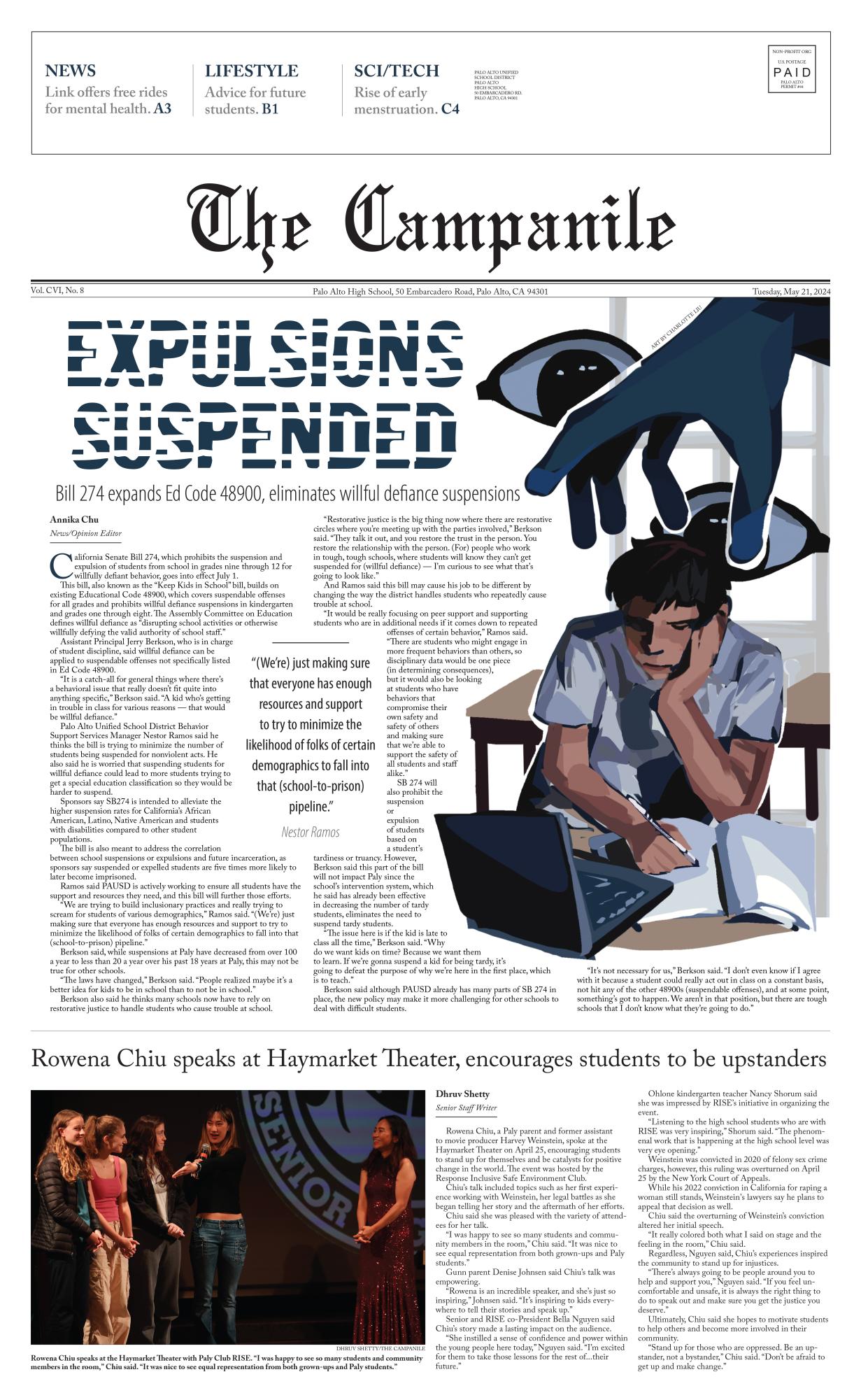Due to a lack of a strong fencing culture and community support, the United States has had limited competitive success in fencing. In the most recent Summer Olympics in 2020, the United States took home 113 medals; its participation in fencing, however, was second-rate, earning one gold and one bronze across 36 possible medals.
However, these circumstances do not deter junior Aniket Jain, who began fencing saber, one of the three fencing styles, in sixth grade at the Cardinal Fencing Club with an initial interest in the sport’s departure from a typical team structure.
“Part of what interested me in fencing was the high individuality of the sport and (facing) an opponent directly,” Jain said. “Previous negative team experiences made this appealing to me, and the individual nature of the sport made it less scary and made me feel less pressure than other teams sports did.”
Since his introduction to the sport, Jain has competed in fencing at local and regional events as well as national competitions and in the Junior Olympics. Jain said this experience was vital in his growth as an athlete.
“Competing for so long has been an excellent way to progress and learn about fencing,” Jain said. “Fencing is an intense and uniquely mental sport. You have to keep immense focus on timing attacks and movements, physical distance, blade actions, and strategy.”
Jain said he commits a grueling 10 hours a week into training and competes one to two times a month, although his heavy commitment pays off in the long run.
“As with any sport, and likely any activity, you get out what you put in,” Jain said. “Training consists of typical conditioning, but also fencing drills and strategy. Group classes involve footwork and blade work drills, but one of the most important aspects of training are one-on-one private lessons, (which) allow your coach to address specific issues in your fencing and introduce entirely new concepts and strategies.”
Junior Allan Chu, who began fencing épée five years ago at the Academy of Fencing Masters, agreed with Jain.
“I train 15 hours a week, and on top of that, I have to travel around one to three times a month for competitions,” Chu said. “Fencing is costly in terms of time and effort.”
Chu said the structure of the sport has some drawbacks.
“There’s undoubtedly tons of frustration due to its harsh points system,” Chu said.
However, Chu’s passion for the sport is unwavering..
“The friends I made and the skills I have developed along the way have had such a positive impact on me,” Chu said. “It has been a huge part of my life for the past five years and has grown to be a part of my identity. I am proud to say I am a fencer.”
After COVID-19, Jain said Cardinal Fencing has seen a reduction in the number of fencers and overall competitiveness.
“Unlike many other clubs who may have skirted COVID-19 regulations, Cardinal Fencing’s association with Stanford ensured that we truly shut down for the main-stage pandemic, so we were reduced to fencing on our front lawns without full equipment,” Jain said. “As such, there is an awkwardly large skill gap which exists between top fencers in the club and the intermediate fencers.”
Jain said low participation in fencing is mainly attributed to the costly nature of the sport.
“Fencing is an expensive sport to set up. It’s not just a ball and a net. It’s many layers of safety gear and electronics,” Jain said. “Without a club to loan you equipment, some may struggle from their location or socioeconomic situation to simply give it a try without considerable purchases of gear.”
While the sport may be a niche one in many parts of the United States, some states enjoy significantly higher participation rates. Dayaal Singh, a senior at Ridge High School in New Jersey, began foil fencing when he was 7 years old.
“At the time, my dad wanted me to play a sport to stay physical, and he thought I could be successful,” Singh said. “When my dad showed me a video of a fencing world championship, I saw the sword fighting, and it inspired me to start fencing.”
Over the course of the last 10 years, Singh said he has fallen in love with the sport and its rewarding nature.
“Apart from the feeling you get from winning, fencing has also given me an opportunity to meet so many people and make many friends,” Singh said. “Being able to travel around the country and the world with my teammates and friends will be something that I will always be grateful towards fencing for.”
Singh said that while the sport is not extremely popular, it has picked up a lot of steam since he first started.
“Living in New Jersey, one of the biggest states for fencing, there are a number of clubs and fencers that I encounter (since) school fencing has become very big with almost every high school around me having a team,” Singh said. “That being said, I do consider (it) a niche sport as it still does not garner that many fans and is not as popular as most sports. Fencing is still a mystery to most people.”






